If you know me and my brand at all, then you know that I pretty much do not believe in lure color at all.
And what I mean by that is I do not believe lure color to be a deciding factor in a fishing trip, not for speckled trout or redfish, anyway.
Specks and reds are just not that picky of a fish, especially slot reds and eating-sized specks. That does not mean that these fish are never picky eaters! I just believe that — in general — especially when compared to bass, these fish are fairly "dumb" and ready to bite anything when actively feeding.
If you can find a good bite of fish in the first place, it will not matter what you have tied on so long as it fits in their mouth and there's a hook attached.
That "knowledge bomb" is the absolute truth, and any inshore angler worth his salt knows that it is 100% the case (or her...there are some lady anglers out there).
So, this begs the question:
What is the point of having different lure colors in the first place?
Well, my answer to that is "lure color is an accelerator".
Yes, if you find a good bite — or at least some kind of pattern — you may discover that the fish more readily bite some specific kind of lure color.
But to do that bears two things:
- That you find a good bite in the first place and...
- ...that you begin experimenting with colors only after #1 has been achieved.
If you're a student of Inshore Fishing 101, then you know this. You especially know that experimenting with lure color before finding the fish can be a huge time-waster.
The worst thing you can do is waste valuable time experimenting with lure colors. The Time Vampire will sabotage your fishing trip long before you ever find the "magical" color that unlocks epic fishing action.
This leads us to the next question:
What lure color should you start with?
This really boils down to what you're confident with. Regardless of what lure color you use, if there are biting fish where you are casting, you will get some kind of feedback.
This feedback will come in the form of:
So use what lure color you are confident with. But maybe you're wondering what I am confident with?
After all, I don't have overarching issues of finding and catching fish, surely there must be a favorite soft plastic color for speckled trout that I recommend?
My Favorite Soft Plastic Color For Speckled Trout Is...
Ultraviolet by Matrix Shad
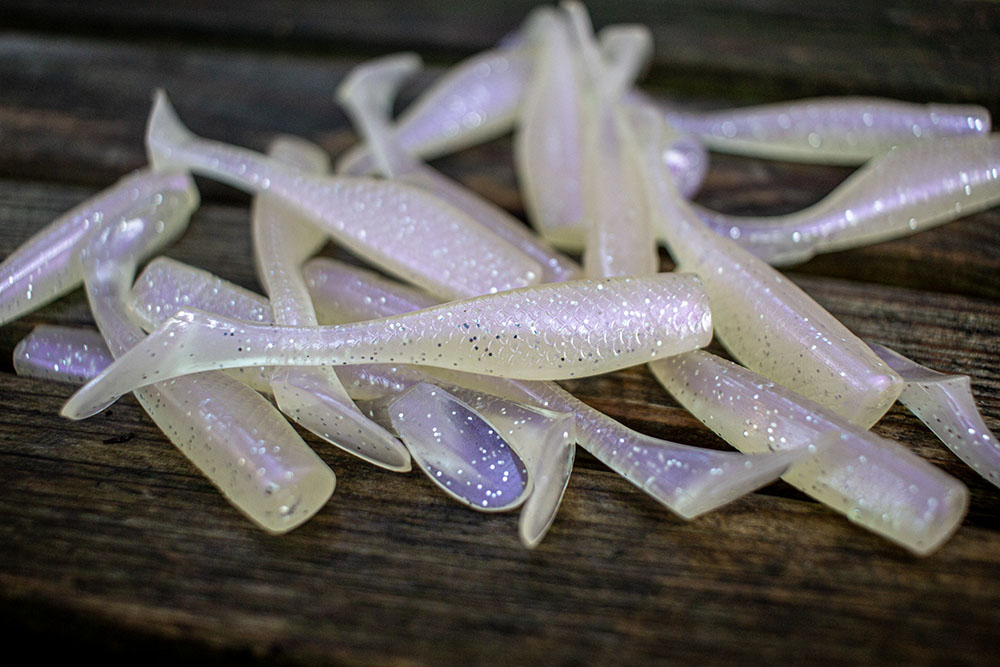
Ultraviolet by Matrix Shad is a "confidence color" for me.
So, why this lure color?
Well, first and foremost, it is a color that sort of looks like everything else in the water. Pogeys (menhaden), mullet, croaker, bay anchovies and more are all kind of silver-ish in color.
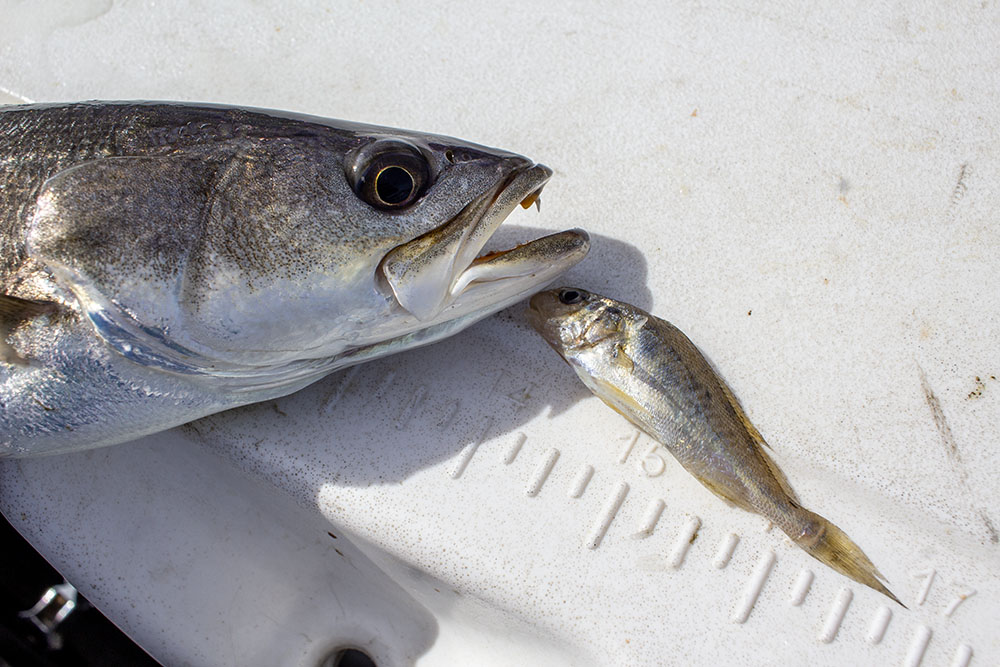
The kind of bait fish that speckled trout eat are silvery in color. So something that's similar is a good color to start with.
That and the Matrix Shad is shaped and sized like these bite-size bait fish, but I already wrote an article about lure profile. Let's not re-hash that here.
Yes, the color Ultraviolet by Matrix Shad is my favorite soft plastic color to start with because it generally looks like everything else in the water column that speckled trout and redfish are eating.
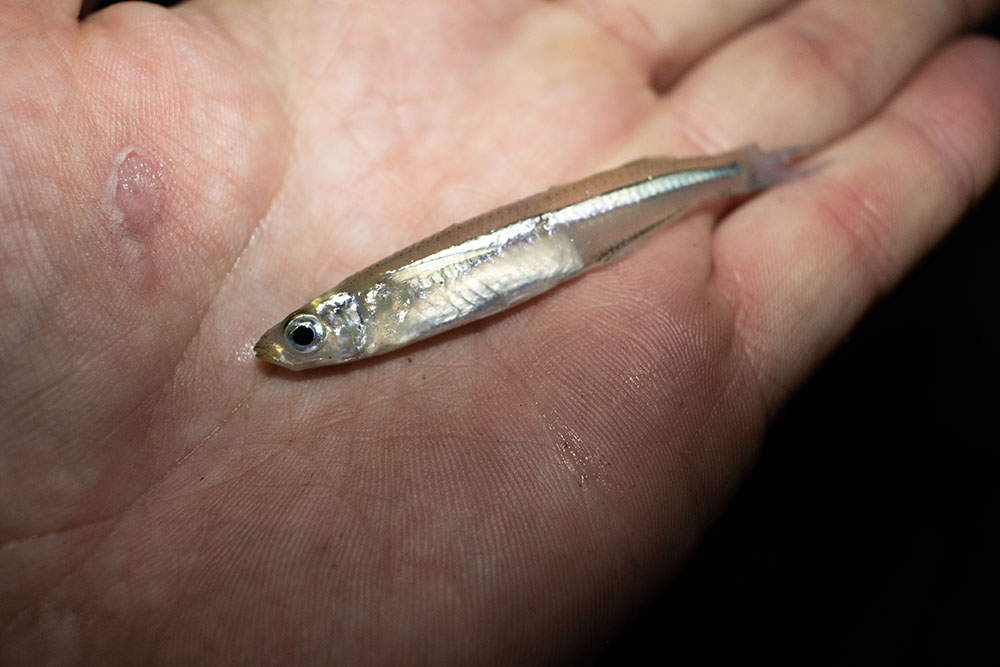
This bay anchovy is also silvery in color.
Matrix Shad's Ultraviolet is flashy and "loud" while still looking au naturale.
I really prefer starting with this favorite soft plastic color in any water condition that is clean to moderately clean, whether that water is green or brown in appearance.
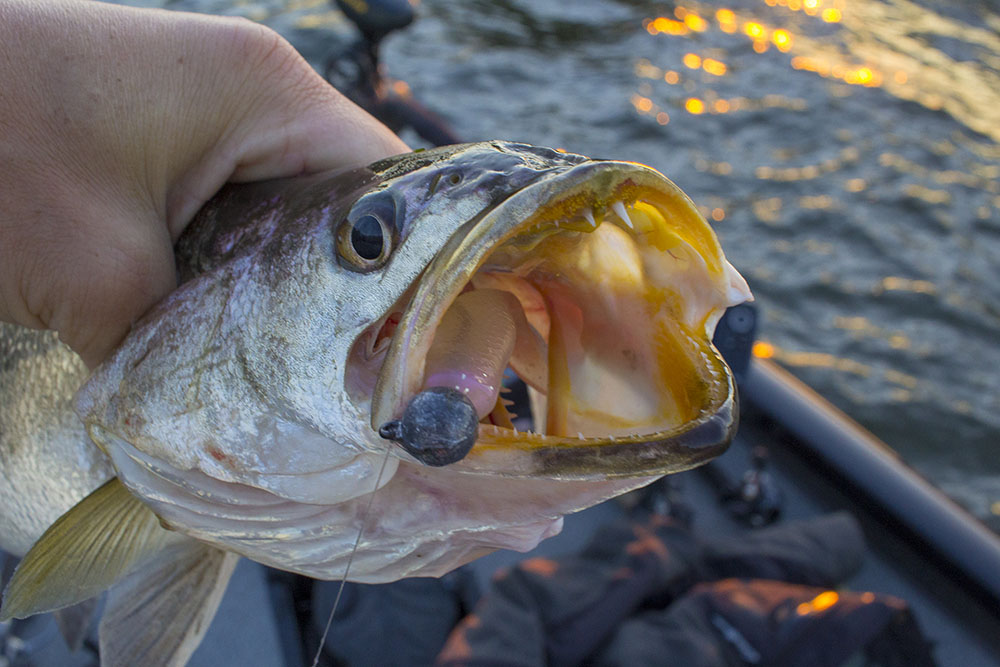
This speckled trout fell for Matrix Shad in Ultraviolet, as did many others.
I do think chartreuse is a staple of inshore fishing and was my "go to" for years. But, after I became considerably better at fishing lures and casting tackle, Ultraviolet just grew on me in a way that chartreuse did not.
And, of course, I've caught a lot of fish on this lure color. Doing that will make anything a confidence booster when it comes to lure selection within the realm of inshore fishing.
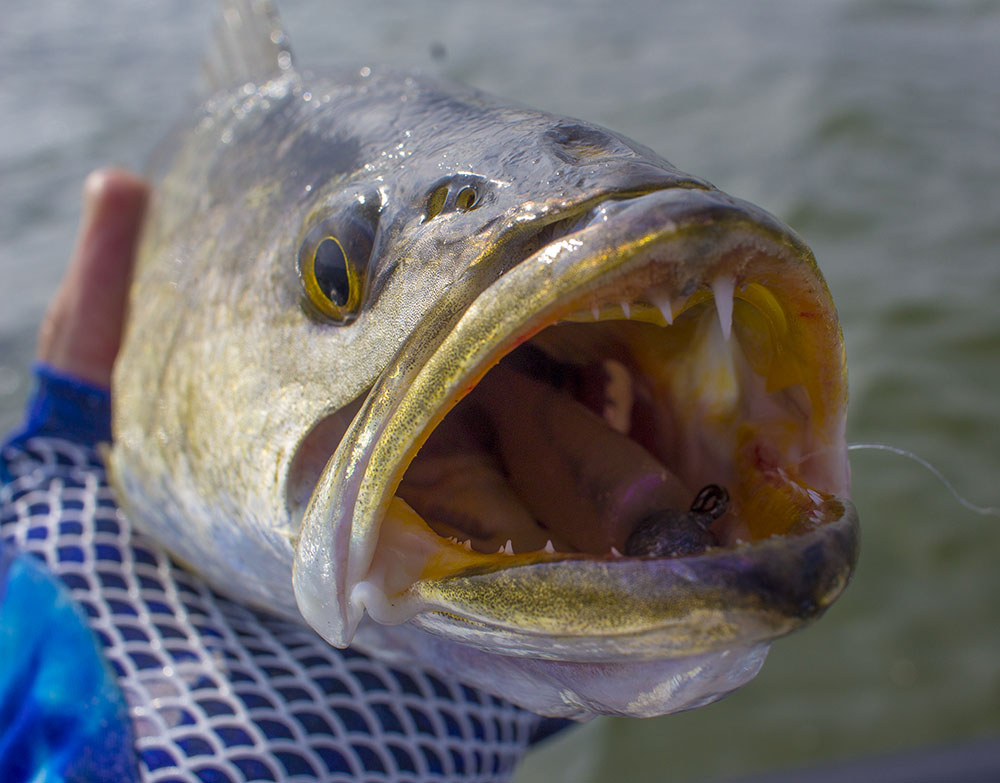
This pretty speckled trout had no problem fully committing to Ultraviolet. She wasn't getting off the hook!
You support my website when you shop at Amazon:
When you do, I receive a small compensation at no extra cost to you!
Are there other lure colors like Ultraviolet that I am comfortable starting with?
Yes. Absolutely.
Colors that are white-ish and silver-ish are good colors I enjoy having tied on first when my fishing trip begins.
Examples include:
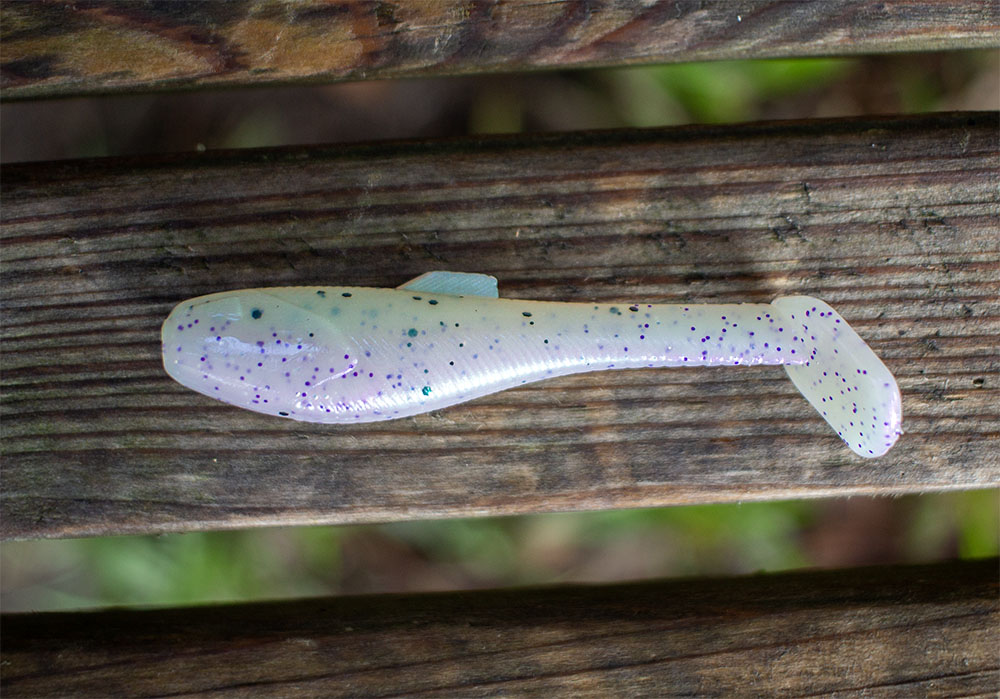
Cajun Lures' Mad Minna in Cocodrie Candy is a favorite of mine as well and deserves an honorable mention.
Of course, I listen to the fish!
They may bite something else altogether and, if they are, I am certain to switch to that color and really capitalize on the bite.
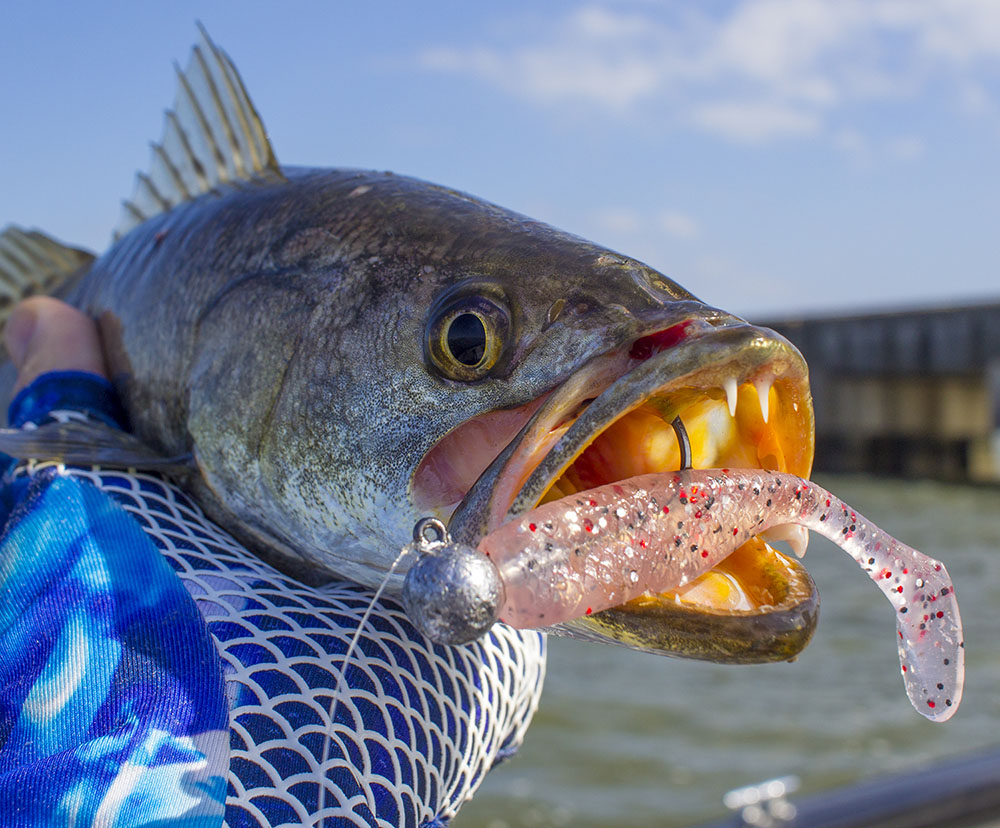
Is speckled trout are biting some other color, then I switch to that color. It's as easy as that!
Now, it's at this point in time that you may be tempted to dive into the minutiae of lure color, to really nitpick and split hairs.
That can be fun, but (as stated before) I largely believe this isn't the most important thing when it comes to planning and executing your fishing trip.
I feel that the most important thing is to find biting fish in the first place. And not just do that, but find them outside of predictable and well-known community holes.
I am talking about finding your own fish — completely from scratch — off the beaten path and far away from unnecessary fishing pressure.
This is what I teach inside LAFB Elite, beginning with my course Inshore Fishing 101. Then, after that, the courses for each season of the year.
But it's more than just finding fish...
You also have to be able to safely navigate to and from those fishing spots, once you've identified them.
You must also identify water that's safe for your boat, detect underwater hazards and avoid them.
This is taught in detail inside the Advanced Inshore Navigation module of Inshore Fishing 101.
Yes, I understand you may be skeptical.
The whole concept of teaching fishing online is relatively new and (I know from experience) difficult to pull off.
But, I've been doing it for awhile and have lots of happy members who'd agree that my courses are great tools for shortening the learning curve:
I thoroughly enjoyed the Inshore Fishing 101 experience. The overall knowledge makes me feel more prepared to find fish on a consistent basis. I've been fishing in inshore Louisiana waters my entire life. While some of the knowledge was not new, the way it is presented with new material really seemed to tie everything together for me.
My biggest take away from 101 was the ability to pick (potentially) productive fishing spots. How to appropriately select weight and why was another huge help. I feel much more prepared for hitting the water!
John Fortner - Louisiana Native
I loved the easiness of going through Inshore Fishing 101, and that I could go back and redo a video lesson.
The content is outstanding! Devin is easy to listen to and follow along. His passion and knowledge of our fabulous fishery is something everyone that wants to better their game should consider.
I have done my best to transfer my knowledge of the marsh to my grandsons. They will watch Inshore Fishing 101, at a minimum.
Leo Damaris - Grandfather
Inshore Fishing 101 was an excellent experience. I learned a lot of good information.
I think the most important thing that I learned was how to use Google Earth Desktop to find new fishing spots and avoid hazards. I never realized how awesome of a tool it is.
Above all, I really enjoyed the attention to detail. I feel like the information inside this course is so broken down that anyone can understand it.
Trey Guidry - Louisiana Native
Knowing a favorite soft plastic lure color is only a small piece of the puzzle. If you want all the pieces, if you want to save time and money, and get straight to catching fish on your own, then I can show you how.

Glad you enjoyed it. Hope you’ve been well!
Skipper, this take some stress out of my process. As I am color blind it is tricky to make selections.
thanks for the clarity.
You’re welcome! Thank you for reading!
That was a great read thank you
I think those are great choices. I actually had a run of clear Mad Minna’s made for me. They’re just clear, no flake or coloring at all. I use it for when the water’s super clear, too.
Me and the boys prefer to use chartreuse if the water is “trout green” but will move to clear colors if the water is gin clear. Colors like Holy Joely and Magneto.